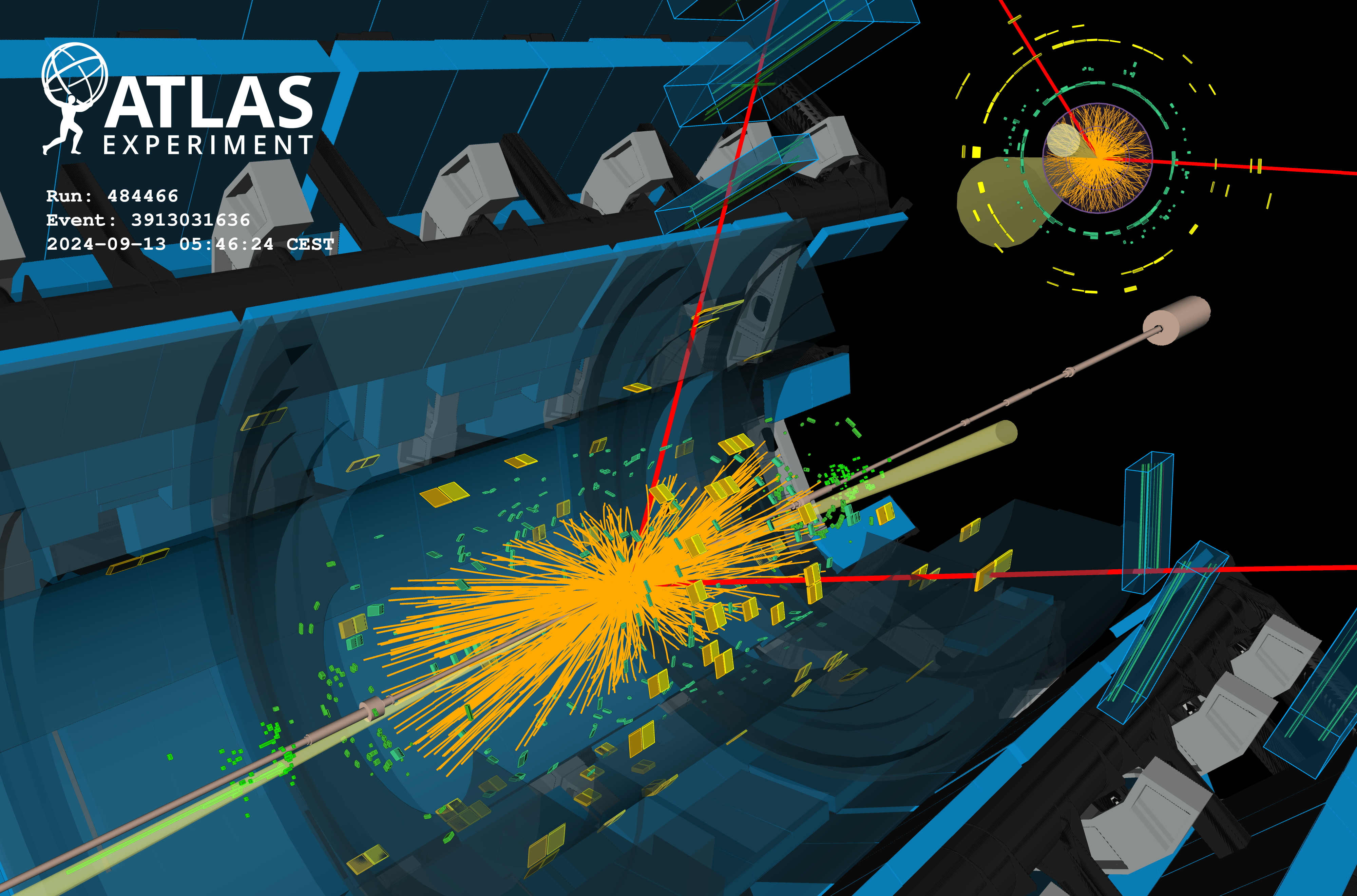ATLAS completes data-taking for Run 2
3 December 2018 | By

Beams in the Large Hadron Collider came to a stop today, closing out four years of record-breaking operation for the ATLAS experiment. Run 2 saw the extraordinary exploration of the high-energy frontier, as the ATLAS experiment brought new understanding of particle physics.
Luminosity, Luminosity, Luminosity
Key to Run 2’s success was the record “luminosity” delivered by the LHC. The higher the luminosity, the higher the number of collisions available for study – and the greater the chance of observing yet unknown rare processes. Over the course of Run 2, ATLAS recorded about 150 fb-1 of proton–proton collision data of which 94% are good for physics analysis, compared to 25 fb-1 recorded in Run 1! Similarly, the amount of high-energy lead–lead collision data, used to explore quarks and gluons in a thermalized state, has increased more than tenfold over Run 1.
“This accomplishment was only possible thanks to the excellent performance of the detector and the dedication of our operations team,” says Masaya Ishino, ATLAS Run Coordinator. “Every year gained in experience allowed us to cope with more and more complex run scenarios, continuously improving ATLAS’ data-taking efficiency.”
Maintaining ATLAS’ pace proved to be no mean feat for the operations team, as the LHC continuously improved its performance with new beam conditions. The LHC ramped up the luminosity and lowered the bunch spacing to 25 ns, while maintaining the small crossing angle of 130 urad between the colliding beams and beams squeezed down to a beta star of 25 cm. Testing these settings was of particular importance, as they will become commonplace in the High-Luminosity LHC programme.
“2018 stands out as the most significant year for the Higgs boson since its discovery.” - ATLAS Spokesperson Karl Jakobs
“Following the change of the running conditions, the ATLAS data monitoring team had to adapt quickly and correctly judge the quality of the data,” says Ishino. “In addition, the trigger team developed sophisticated new algorithms, which improved our ability to immediately identify physics objects. In the end, 2018 saw our highest data-taking efficiency yet: 95.7%.”
Explorations of the high-energy frontier
High-quality data has led to high-quality results. Over the course of Run 2, ATLAS released already more than two hundred publications, of which dozens were featured in dedicated physics briefings highlighting key advancements in particle physics. Among these, the headline-making evidence for light-by-light scattering, the LHC’s first measurement of the W-boson mass, observations of key electroweak scattering processes, searches for subtle new physics processes, measurement of ultra rare B-meson decays, and much more.
Study of the famed Higgs boson proved especially fruitful during Run 2. “2018 stands out as the most significant year for the Higgs boson since its discovery,” says Karl Jakobs, ATLAS Spokesperson. “Over the span of a few short months, we announced the observation of two production processes, the Higgs boson produced with a top-quark pair as well as with a weak boson, and its decay into a pair of bottom quarks. This success was thanks to the excellent performance of the LHC and the ATLAS detector, and the dedication of many people operating the detector and analysing the data.”
With these breakthrough observations in hand, ATLAS physicists can transition to precise measurements of the boson’s properties, potentially leading to new discoveries. As analyses grow more complex and detailed, new opportunities arise to challenge the Standard Model.
Looking ahead
Though data-taking has come to a stop, the work of the ATLAS collaboration will intensify. Detector teams will dedicate the next two years to upgrading and consolidating the experiment, while physics analysis groups will continue to sift through their vast collection of Run 2 data.
“Next year, ATLAS will release its first results using the full Run-2 dataset,” concludes Jakobs. “This is the largest data set we have ever had the opportunity to work with. It will allow us to probe more precisely the Standard Model and to reach out to very rare processes.”
Learn more
- Read ATLAS Physics Briefings and Press Statements.
- See also the full lists of ATLAS Physics Papers and ATLAS Conference Notes.



